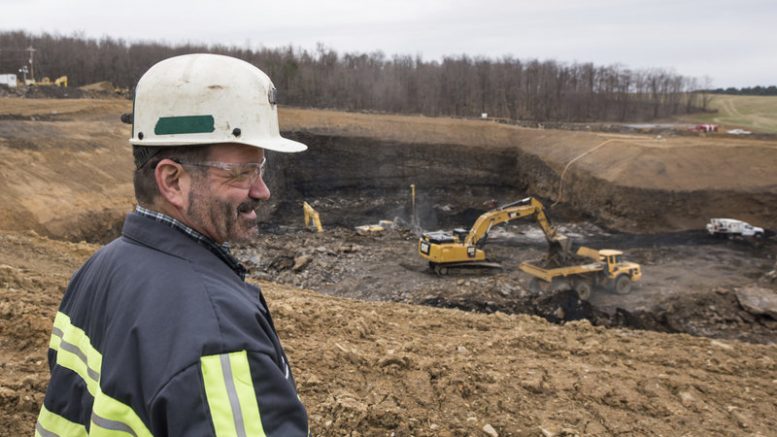While for much of past twenty years there has been a slow withering of the mining industry in the U.S., with the notable exceptions of a few bright spots such as gold mining in Nevada, things are starting to look much more optimistic thanks to a combination of rising commodity prices, an easing of regulatory burdens and a new pro-business atmosphere punctuated by the deep corporate cuts in the U.S. Tax Cuts and Jobs Act pushed through by Republicans as 2017 drew to a close.
One of the first signs of recovery came in the early months of 2017 as coal mines in Appalachia started to reopen and hire new employees in response to the doubling of metallurgical coal prices — reversing a brutal 5-year decline in Big Coal that saw the bankruptcies of most of the country’s largest coal miners in the mid-2010s.
Year-over-year, U.S. coal production increased 8.9% in the 52 weeks ending Dec. 23, according to the Energy Information Administration’s weekly estimates.
The number of working miners in the U.S. is not yet available for 2017, but the figure hit an all-time low of 52,000 in 2016, compared to 92,000 in 2011 when met and thermal coal prices were both strong.
The Trump administration’s early appointment of Oklahoma Attorney General Scott Pruitt to head up the U.S. Environmental Protection Agency signaled a new direction for the EPA that would see it narrow its regulatory focus and take a more pragmatic approach to resource development.
In previous roles, Pruitt, a socially conservative lawyer who once served as state senator for the Tulsa area, had openly criticized the agency for overstepping its bounds, had sued the EPA to block its carbon emission-capping Clean Power Plan, and worked to roll back EPA regulations imposed in the oil and gas industry, which is critical to Oklahoma’s economy.
For miners, the new direction at the EPA was seen in the agency adopting a moderated stance towards Northern Dynasty Minerals’ proposed Pebble copper-gold mega-project in Alaska, which is now back on track with a more modest development proposal.
In another pro-domestic mining move instituted before Christmas, U.S. President Donald Trump signed an executive order to reduce the country’s dependence on imported critical minerals.
In a release, the White House stated that the comprehensive order “aims to identify new sources of critical minerals, ensure miners and producers have access to the best data, and streamline the leasing and permitting process to expedite production, reprocessing and recycling of minerals at all levels of the supply chain.”
“This executive order will prioritize reducing the nation’s vulnerability to disruptions in our supply of critical minerals safely and responsibility for the benefit of the American people,” Trump said in the statement.
The U.S. Department of the Interior notes that in 2016 the U.S. was reliant on imports for 23 minerals including cobalt, lithium, graphite and rare-earth elements, and is most reliant on China, which supplied the U.S. with at least 20 critical minerals.
The sweeping federal corporate and personal tax cuts passed at the end of 2017 are truly breathtaking and will take months for accountants to come grips with. Most notably, the U.S. federal corporate income-tax rate was cut from 35% to 21% on Jan. 1, 2018.
The tax cuts could certainly cause Canadian-headquartered mining companies with operations in the U.S. to relocate south of the border in the coming years, as Canada has in one fell swoop effectively lost its tax advantage over the U.S. at both the corporate and personal levels.
Worse, Canadian governments are going in the wrong direction compared to the U.S. in terms of personal and corporate taxes, energy costs, carbon taxes, trade agreements and regulatory burdens that have already killed off major pipeline projects in Canada.
Tucked into the recently passed Republican tax overhaul bill was a provision to open Alaska’s remote Arctic National Wildlife Refuge (ANWR) to oil and natural gas drilling, ending more than four decades of heated debate on the matter, and setting the stage for another oil boom in Alaska that can only benefit other resource development efforts in the state.
One last bit of heartening news for U.S. miners came in mid-December as Wisconsin’s Republican Governor Scott Walker signed a bill to lift a ban on gold and silver mining imposed in the mineral-rich state in 1998 in order to dissuade the mining of sulphide ore and the production of sulphidic tailings.
“If there’s anywhere in the world that should be able to conduct safe and environmentally sound mining, it should be the Badger State,” Walker tweeted.




Be the first to comment on "Editorial: The coming US mining renaissance"